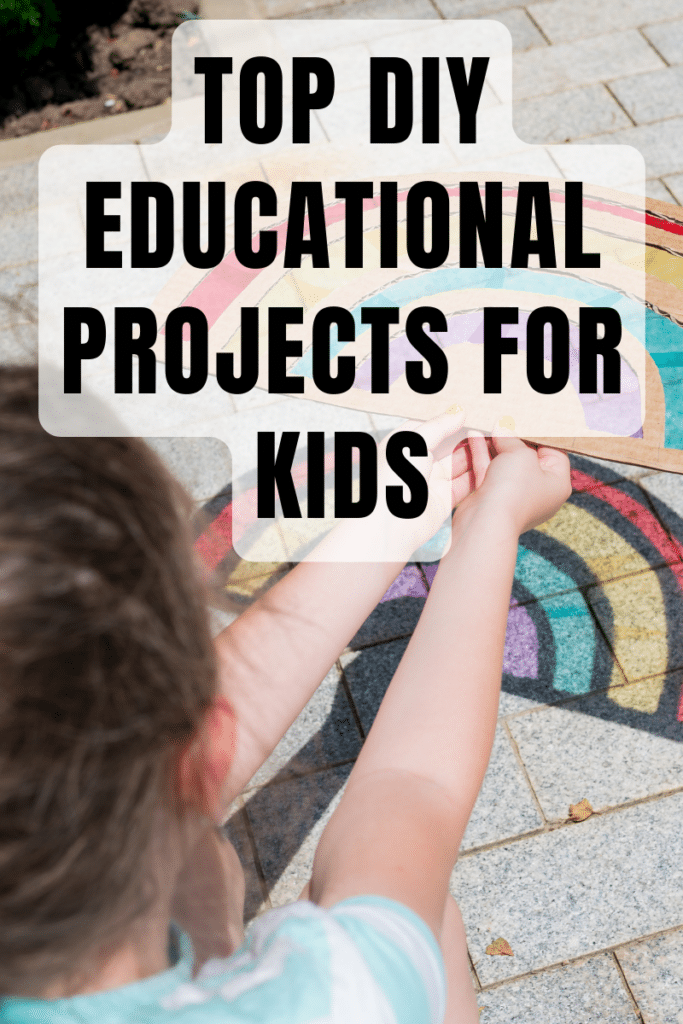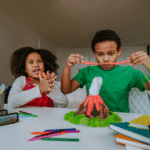Educational projects offer a fantastic way to engage children’s curiosity and foster a love of learning. DIY projects, in particular, can enhance critical thinking, creativity, and practical skills while having fun. Here are some top DIY educational projects that are both enjoyable and informative.
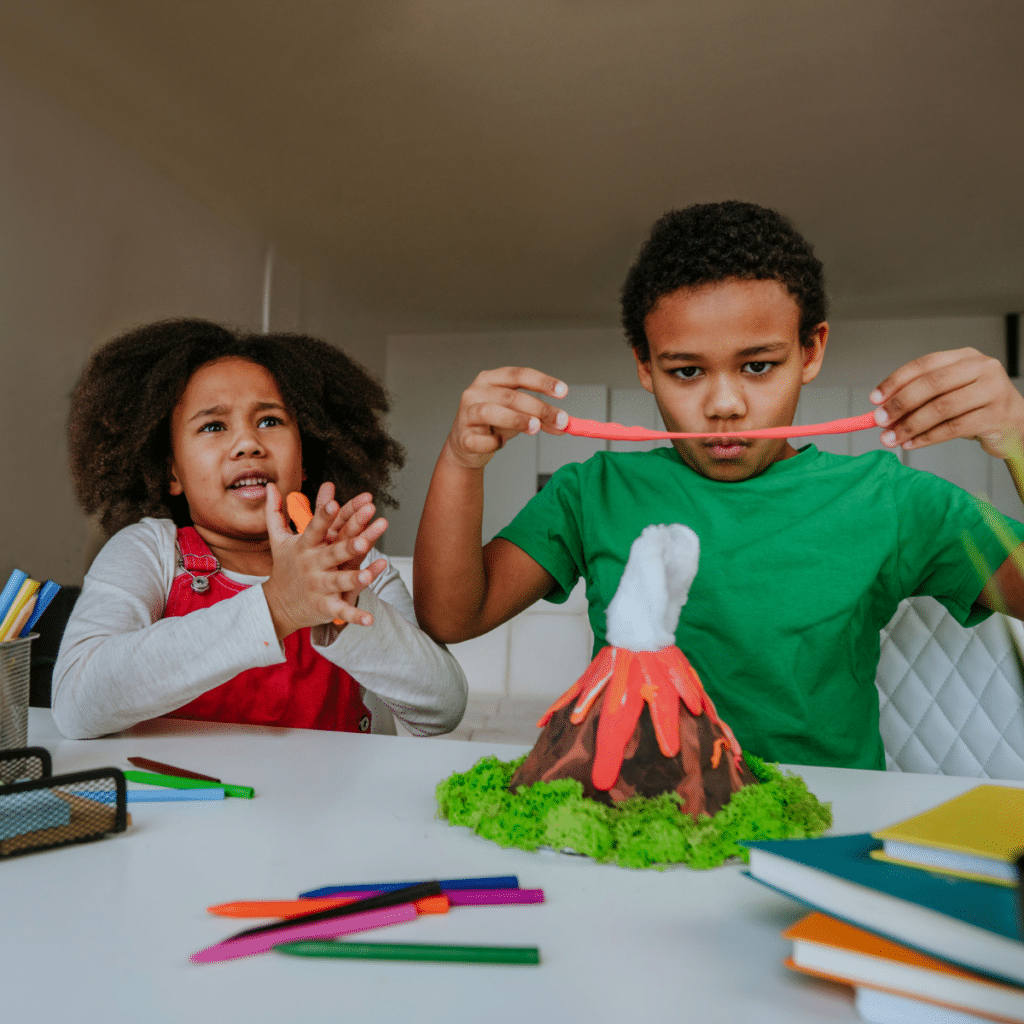
1. Homemade Volcano
Creating a homemade volcano is a blast and a great way to dive into the basics of chemistry. Here’s how to make your very own eruption at home:
- Gather Materials: You’ll need baking soda, vinegar, dish soap, food coloring, a small bottle, and materials to make your volcano (like clay, papier-mâché, or even dirt if you’re taking this project outside).
- Build the Volcano: Shape your volcano around the bottle. Ensure the bottle sits securely at the volcano’s center, forming the crater at the top.
- Prepare the Lava Mixture: In the bottle, mix about two tablespoons of baking soda, a squirt of dish soap, and a few drops of food coloring.
- Erupt Your Volcano: When ready for the action, pour vinegar into the bottle and watch as your volcano comes to life!
Through this hands-on project, kids can learn the fundamental principles of chemistry while having fun and sparking a curiosity about the natural world and its phenomena.
For students who find themselves fascinated by the underlying science but need help articulating their discoveries in a structured way, research paper writing services offer a parallel form of assistance. Just as the experiment provides a practical understanding of chemistry, a custom research paper platform can help students effectively communicate complex scientific concepts and findings, enhancing their learning experience by bridging the gap between doing and explaining.
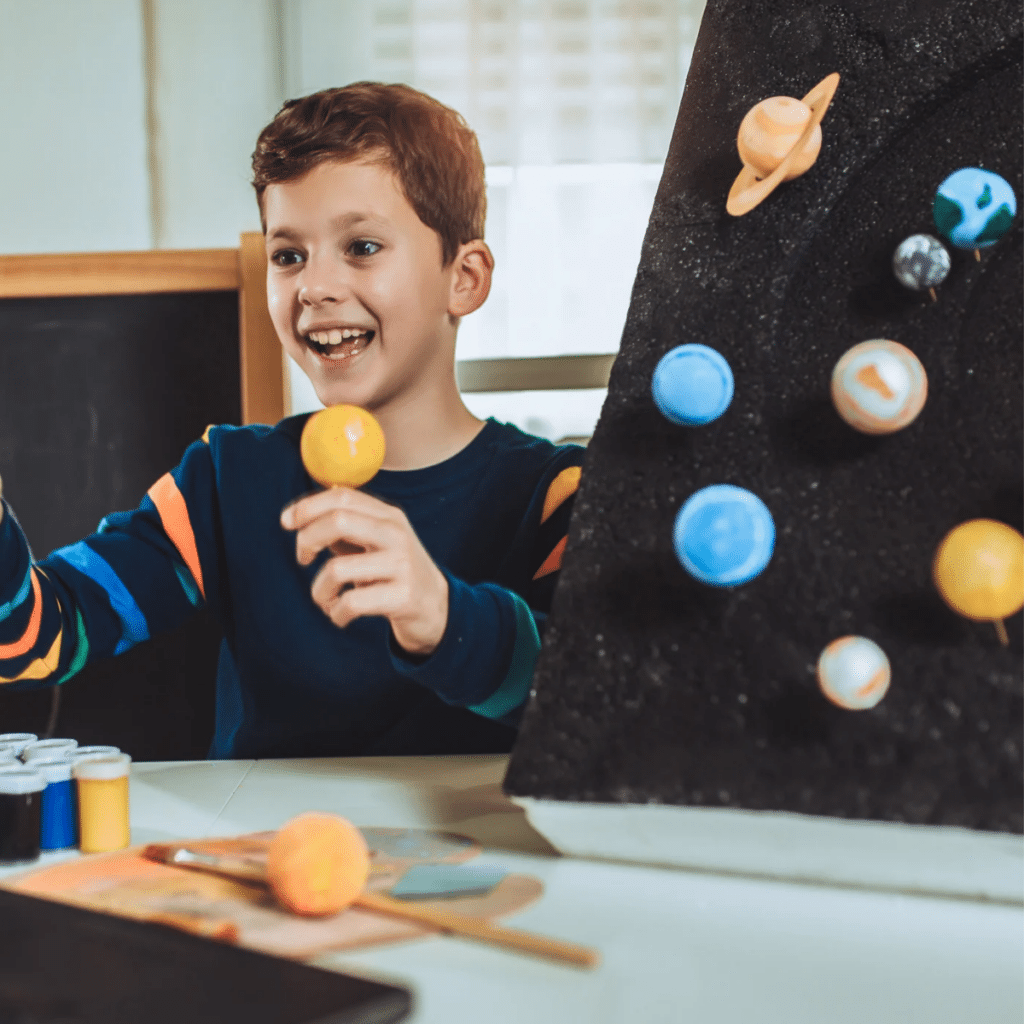
2. DIY Solar System
Crafting a DIY solar system is an engaging way to bring the vastness of space into your home or classroom. Here’s a simple guide to creating your miniature cosmos:
- Collect Materials: You’ll need balls of different sizes to represent the planets and the sun, paint in various colors, brushes, a large poster board or materials for mobile (like wire or string), and images of the planets for reference.
- Paint the Planets: Assign each ball to a planet based on size. Paint each ball to match the appearance of its respective planet. Don’t forget to paint one as the sun, making it the largest or the most vibrant.
- Arrange the Planets: On a large poster board, lay out the painted balls to mirror the planets’ order and relative distances from the sun.
- Label and Learn: Label each planet and include interesting facts or figures about each one, like its distance from the sun or unique features.
By physically mapping out the planets, children can better appreciate the vast distances in space and the beauty of our celestial neighborhood, fueling their curiosity and imagination about the universe beyond our planet.
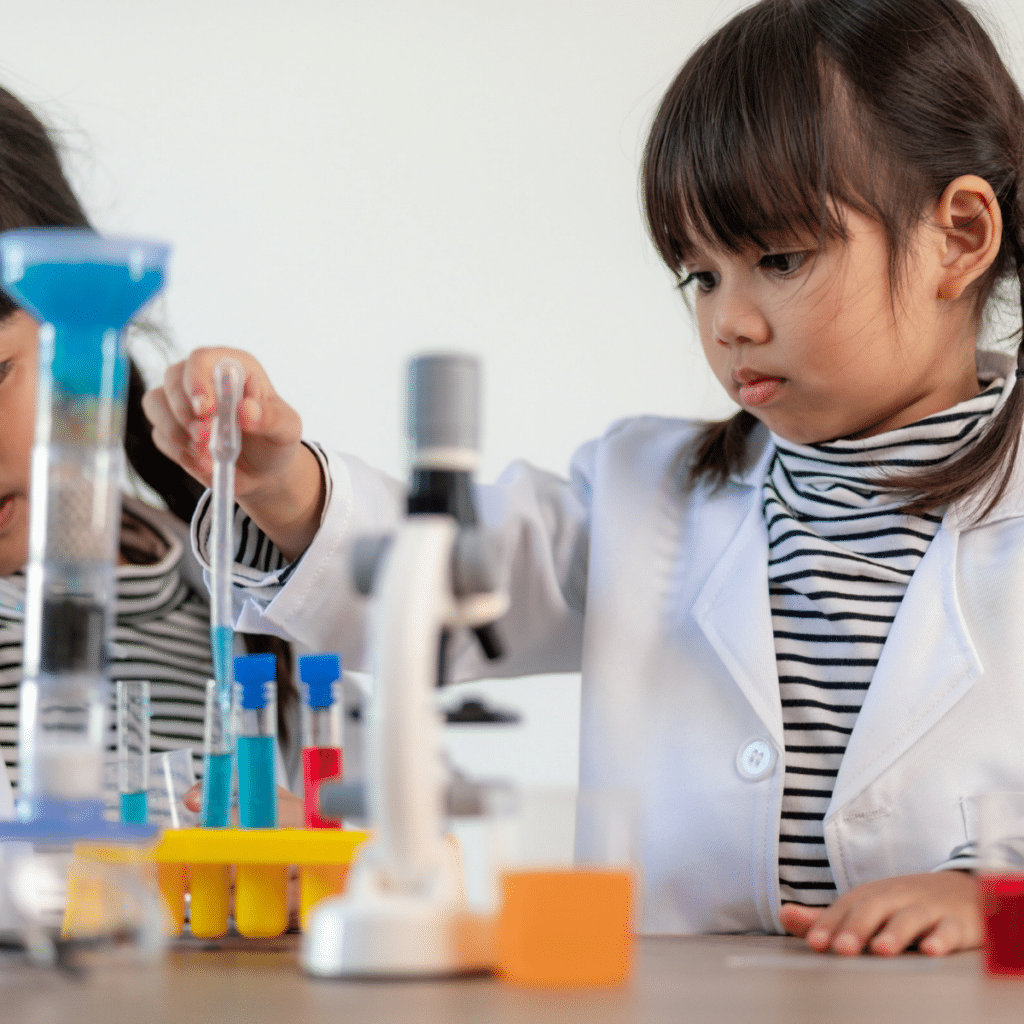
3. DIY Microscope
Creating a DIY microscope opens a window into the microscopic world for kids, sparking their interest in science and the tiny wonders around us. Here’s a simple guide to make your own:
- Gather Materials: You’ll need a smartphone with a camera, a small laser lens (often found in laser pointers or old DVD players), some cardboard, tape, and scissors.
- Prepare the Lens Holder: Cut a piece of cardboard into a strip long enough to wrap around your smartphone. Cut a small hole in the center of the strip, just big enough for the laser lens to fit snugly.
- Secure the Lens: Place the lens over the hole you’ve cut and use tape to secure it, ensuring it’s aligned with your smartphone’s camera lens when the cardboard strip is wrapped around the phone.
- Create a Stage: Cut another piece of cardboard to serve as a stage for placing objects you want to magnify.
- Assemble and Explore: Wrap the cardboard strip with the lens around your smartphone, positioning the lens directly over the camera. Place an object on the stage, turn on your phone’s camera, and focus on the object by moving the phone.
This DIY microscope project demystifies the concept of magnification and lenses, showing kids how they can explore details of the world too small to see with the naked eye.
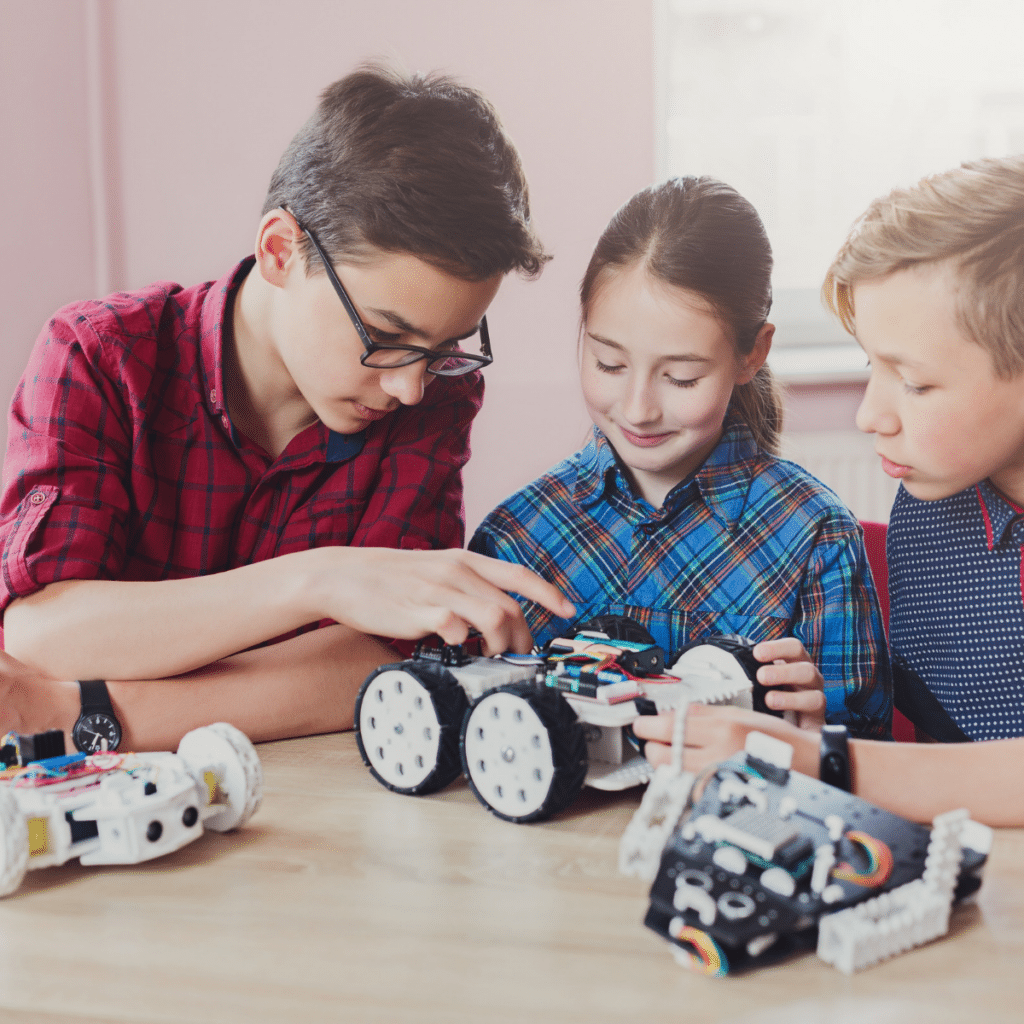
4. Build a Bird Feeder
Constructing a bird feeder with recycled materials is a beautiful project combining creativity, conservation, and ecological awareness. Here’s a straightforward guide to get started:
- Gather Materials: Use an old milk carton, plastic bottle, or wood scraps.
- Cut Openings: For cartons or bottles, cut holes for bird access. For wood, assemble a simple structure.
- Decorate: Personalize with weather-resistant decorations.
- Add a Perch: Attach a stick below the openings as a perch.
- Hang Your Feeder: Fill it with birdseed, hang it from a tree, or mount it on a post.
This project teaches kids about recycling, ecology, and bird species, directly connecting them with nature’s beauty in their backyard.
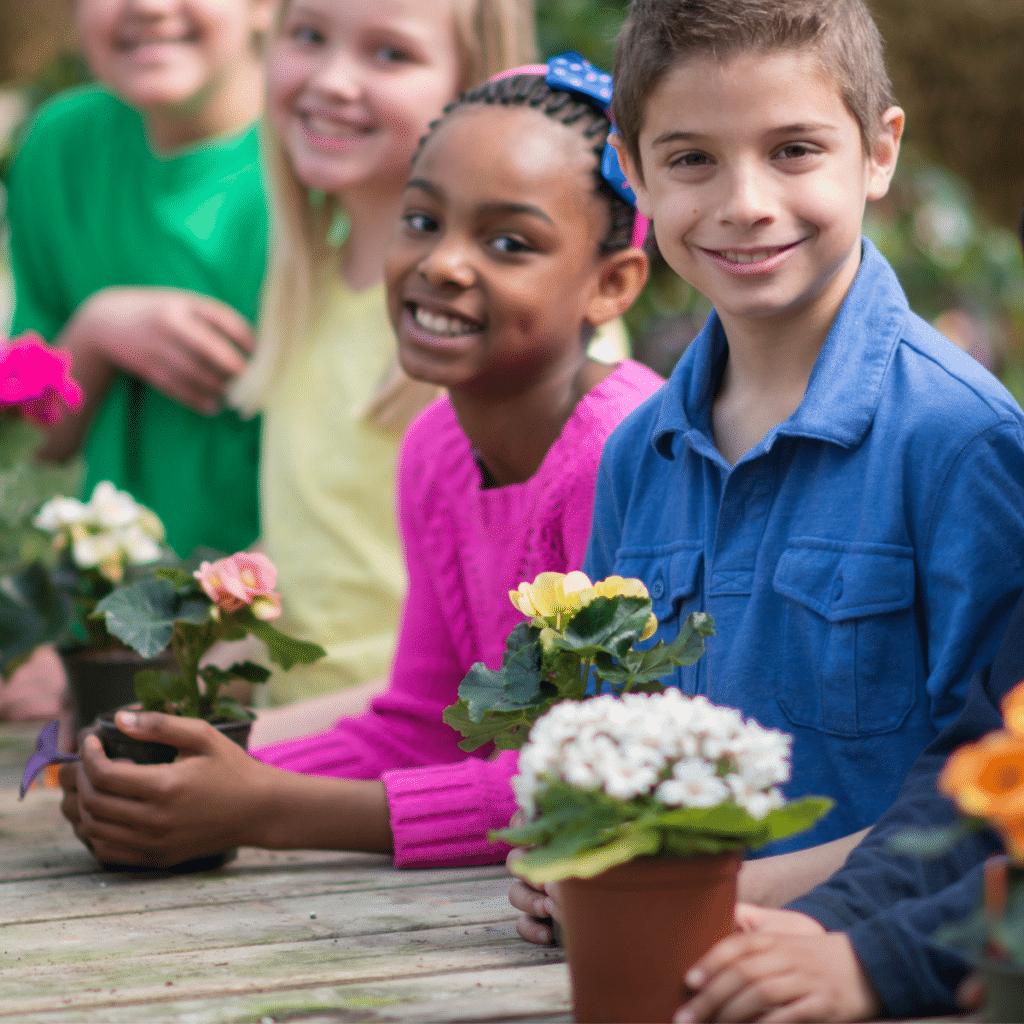
5. Plant a Vegetable Garden
Starting a vegetable garden is a fantastic way to dive into the wonders of nature. Here’s how to get your green thumbs going:
- Choose Your Location: Pick a spot with plenty of sunlight and good drainage.
- Select Your Seeds: Start with easy-to-grow veggies like tomatoes, carrots, or lettuce.
- Prepare the Soil: Use a mix of garden soil and compost to give your plants a nutrient-rich start.
- Plant Your Seeds: Follow the instructions on the seed packets for depth and spacing.
- Water Regularly: Keep the soil moist but not waterlogged.
- Watch Them Grow: Teach kids to observe the growth and note changes.
This garden project isn’t just about growing food; it’s a hands-on lesson in life cycles, environmental stewardship, and the joys of nurturing growth from seed to supper.
In Summary
Incorporating these DIY educational projects into your child’s learning routine can make education an exciting adventure. Each project offers a hands-on learning experience and nurtures creativity, problem-solving skills, and a passion for discovery.
Whether exploring the mysteries of the solar system, the intricacies of our ecosystem, or the wonders of physics, these projects turn learning into an engaging, enjoyable process that prepares kids for a lifetime of curiosity and exploration.
